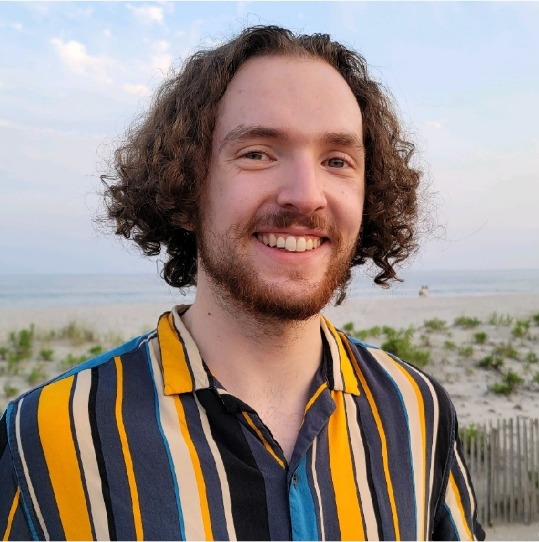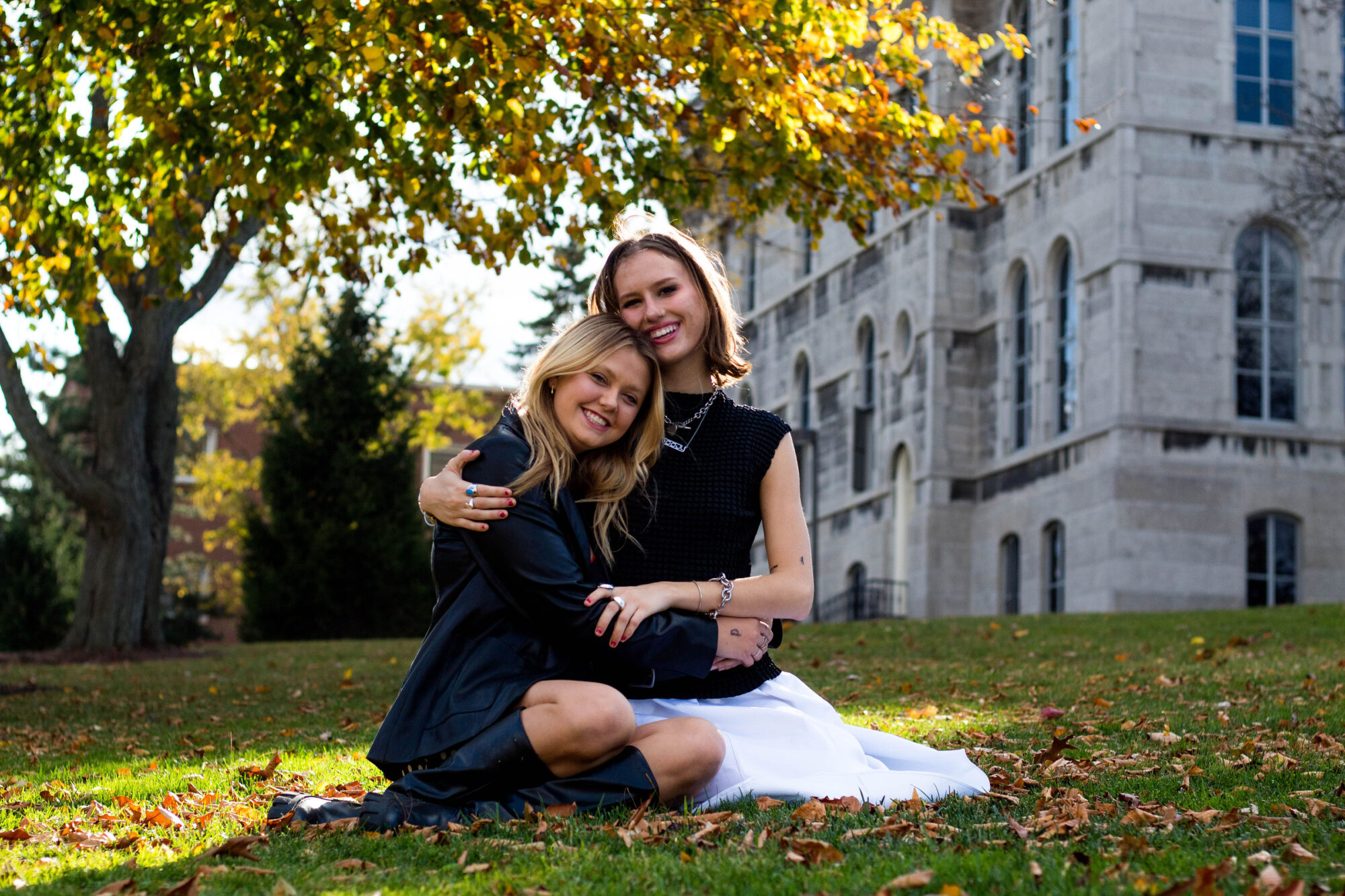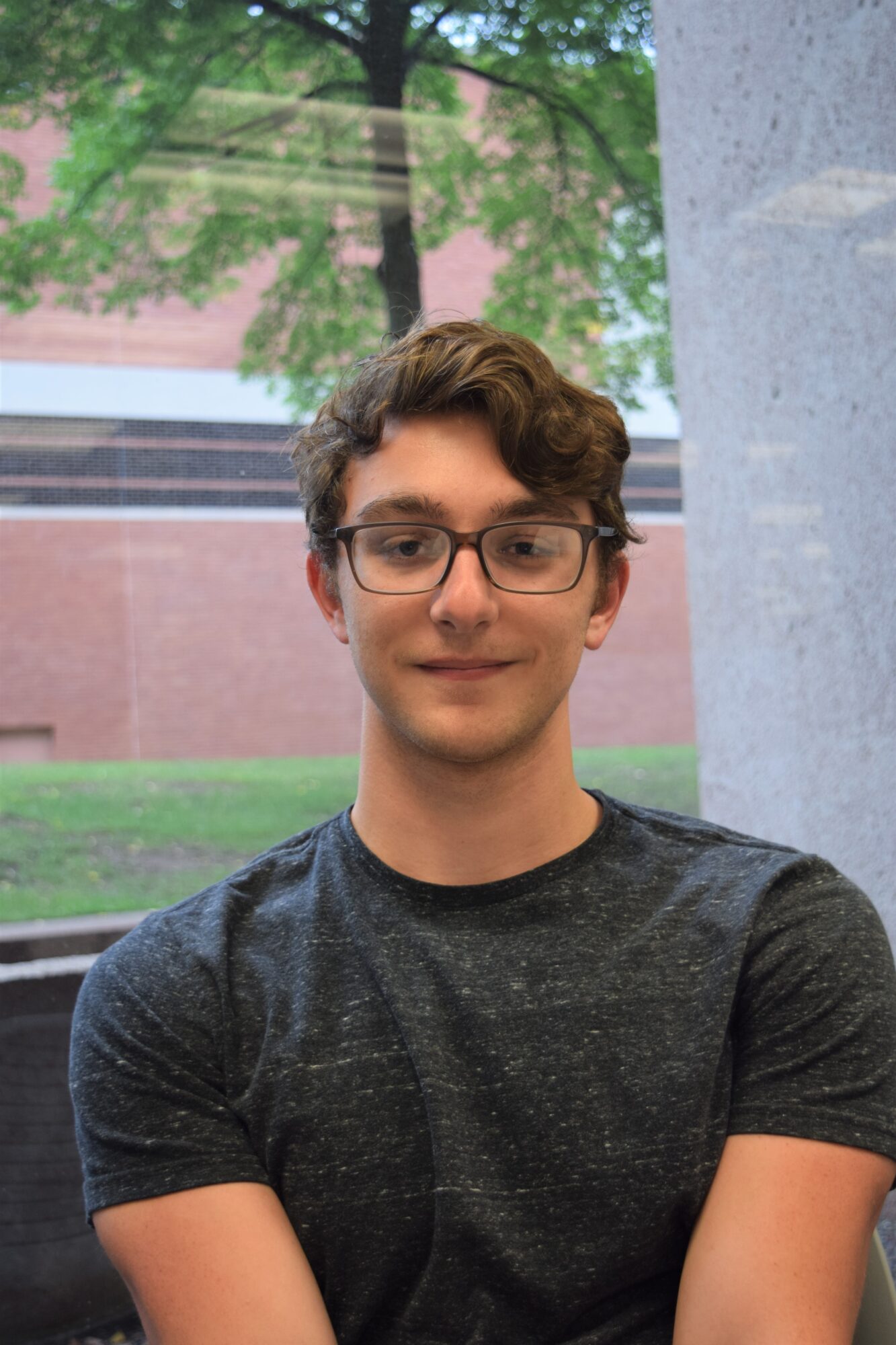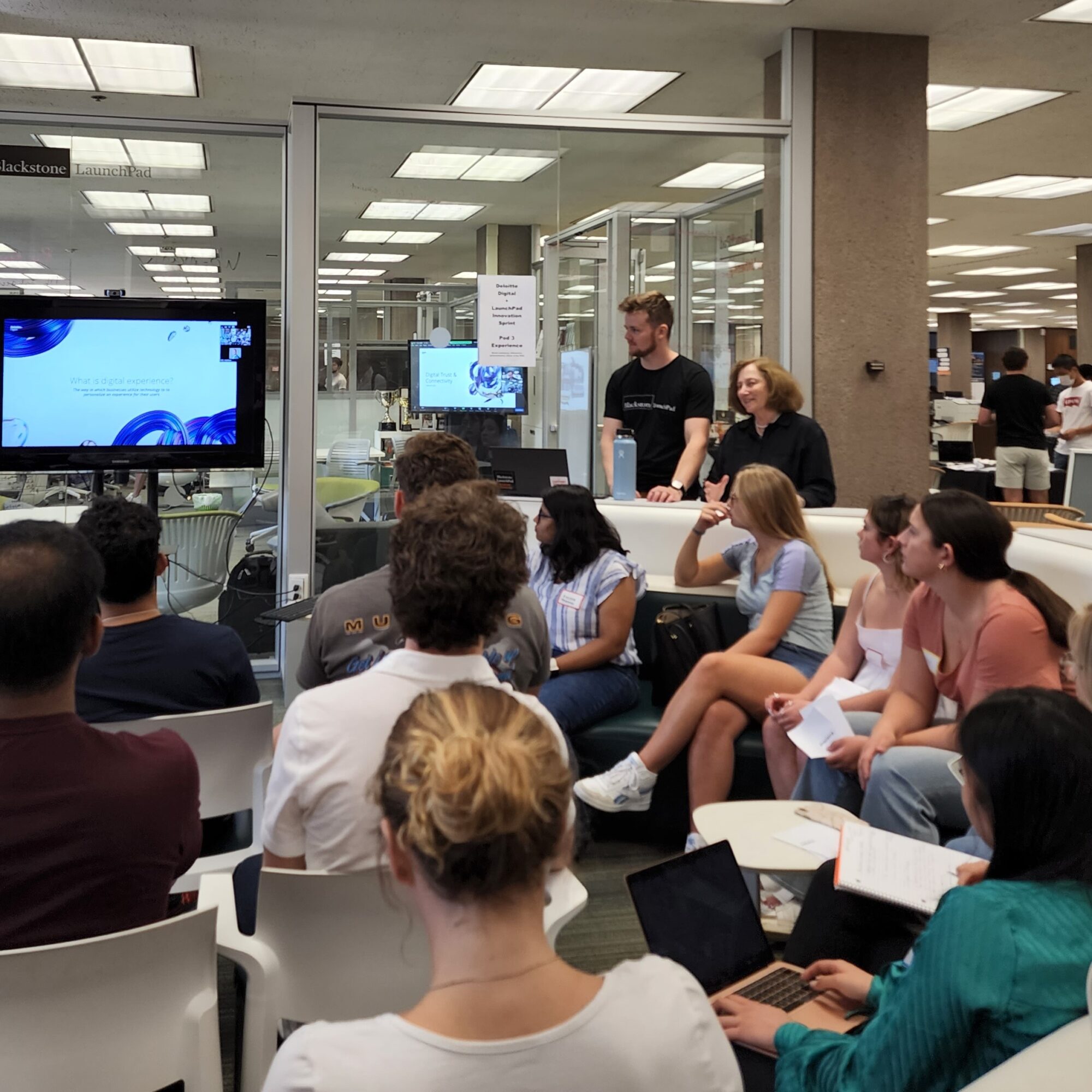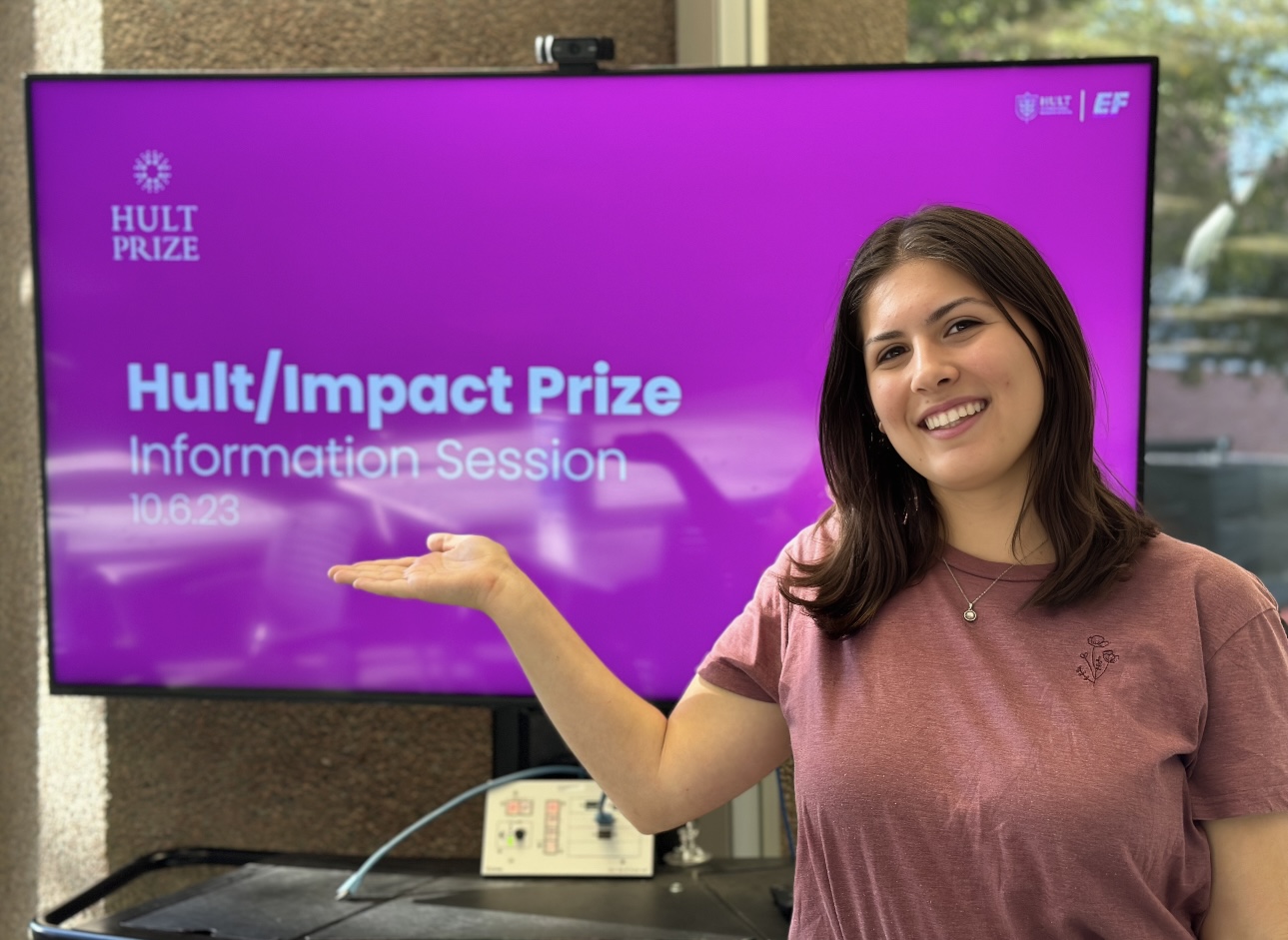
The Hult Prize.
It’s an amazing business plan competition that challenges an international community of young innovators to solve the world’s most pressing issues through social entrepreneurship. Every year, one team walks away with $1 million in funding to make their idea a reality. And this year, Sarah Schreiber ’26 will be filling the role of campus ambassador and competition director at Syracuse University as she supports our own student innovators in preparation for the campus qualifier held concurrent with the Impact Prize on November 15, 2023.
Sarah, a LaunchPad Global Fellow and a student of International Relations at the Maxwell School of Citizenship and Public Affairs, possesses a passion for international culture that far surpasses the routine studies of her degree program. This interest sprouted in high school when she had the opportunity to take her first Spanish class, and she’s been enamored with learning about people and places across the globe ever since.
Sarah’s first international adventure came about when she seized an opportunity to take an expenses-paid gap year in Germany through a prestigious scholarship program. There, she was able to pause and reflect on her nail-biting, all-or-nothing approach that she’d previously maintained in regard to her academics.
“What people describe as slow living in America is just life in Germany,” Sarah says. “The people there work hard, but it’s not as money-driven as it is here. They take plenty of time to enjoy their families, friends, and hobbies too.”
Through conversations with locals and numerous other experiences abroad, Sarah also started to realize how much larger the world was than Virginia Beach—her home, which she humorously describes as “almost the South, but not quite the South”—and this excited her. It excited her so much, in fact, that she began her freshman fall semester in Florence, Italy through the SU Discovery Program, an opportunity which provides an international foundation to students looking to expand their academic and professional options, foreign language proficiency, and comprehension of global politics and issues.
Between her studies, her international experience, and her role as a virtual SAT tutor for students in Mexico, Sarah couldn’t be a better fit for this honor. After all, there are few U.S. teenagers who are able to say that they gave a full-length presentation in German whilst in Dresden. One of her favorite credos is, “if I can do it in German, then I can do it in English.”
Sarah first found out about the Hult Prize when she returned from Florence in the spring of 2023. At first, she felt that she’d missed the bus on involvement opportunities, but that was until she befriended a LaunchPad alumna, Sasha Temerte ‘23—the Hult Prize ambassador and director for 2022-2023—who visited one of her classes that semester and encouraged her to stop by. It was at the LaunchPad where Sarah also met Claire Howard ‘23—the Hult Prize ambassador and director for 2020-2021—and the two of them quickly bonded over their interests in international relations and German.
That same semester, Sarah followed in the mentorship of her two new friends and was able to accompany Tree-Spun, the winning team of the Hult Prize qualifier, to the quarterfinals in Boston. While she was there, she watched as many pitches as she could and found herself deeply engaged in the rich, academic conversations being held between the judges and the competitors talking about their businesses.
“This is an incredible community to be a part of,” Sarah says. “The people drawn to it are international, so you will definitely learn about new cultures. They have ideas and plans to do good in this world, and they are such kind and genuine people. It also provides you with so many valuable connections. I can’t say enough good things about it. It’s really incredible.”
Sarah hopes to feel just as inspired by the competition this time around, and it’s a really good year for inspiration.
In the past, the Hult Prize has limited its competitors to create social enterprises that address specific topics, such as clean energy, early childhood education, or sustainable food production. But in celebration of the Hult Prize’s 15th anniversary, this year’s theme is “UNLIMITED!” Meaning, you can pitch any idea you want, as long as it’s world-changing and aligns with at least one of the United Nations Sustainable Development Goals (SDGs).
If you’re interested in applying to this year’s Hult Prize, learning more about the specific rules and regulations, or learning more about the SDGs, you can visit the website here.
Syracuse University on-campus applications will open later this Fall.
